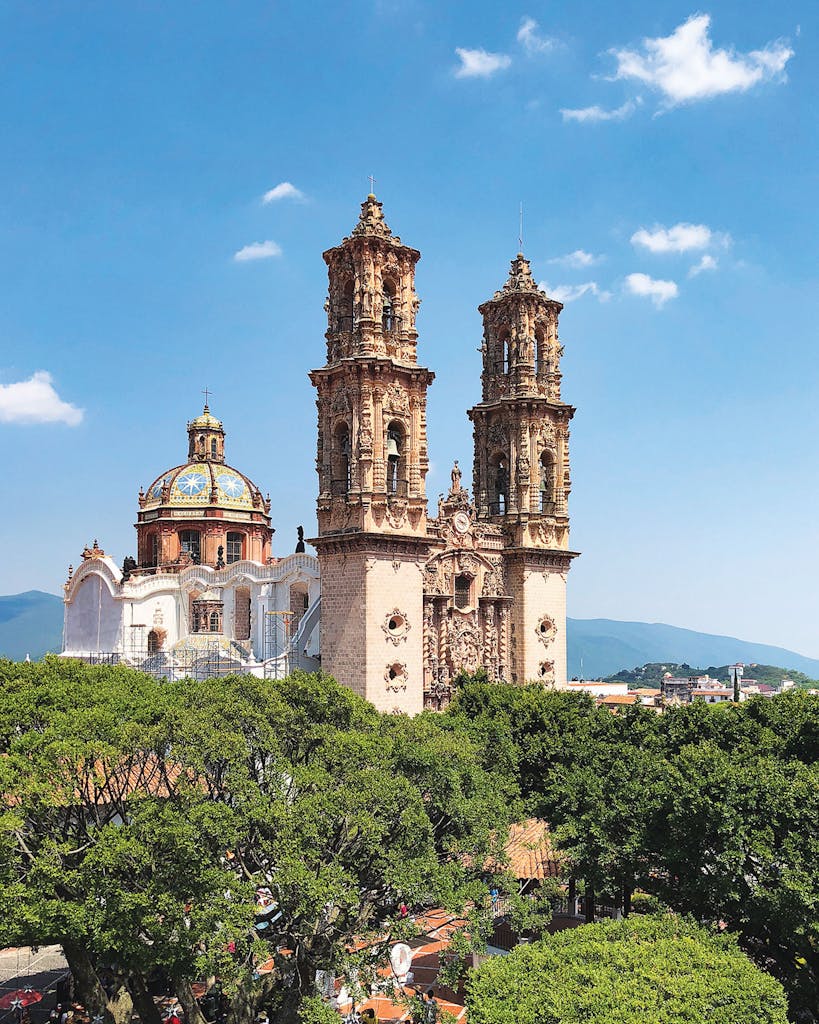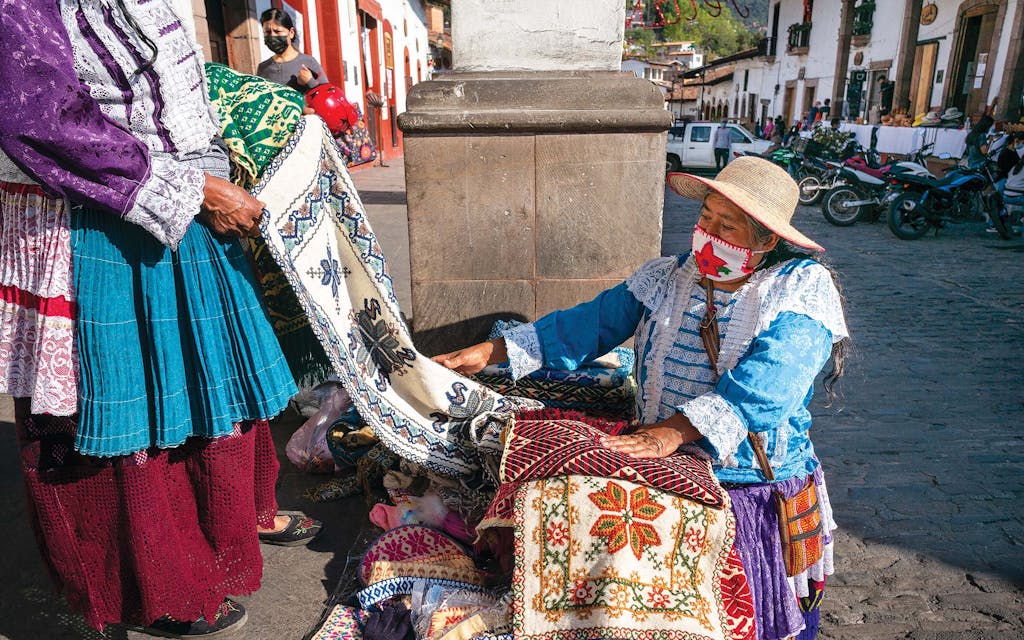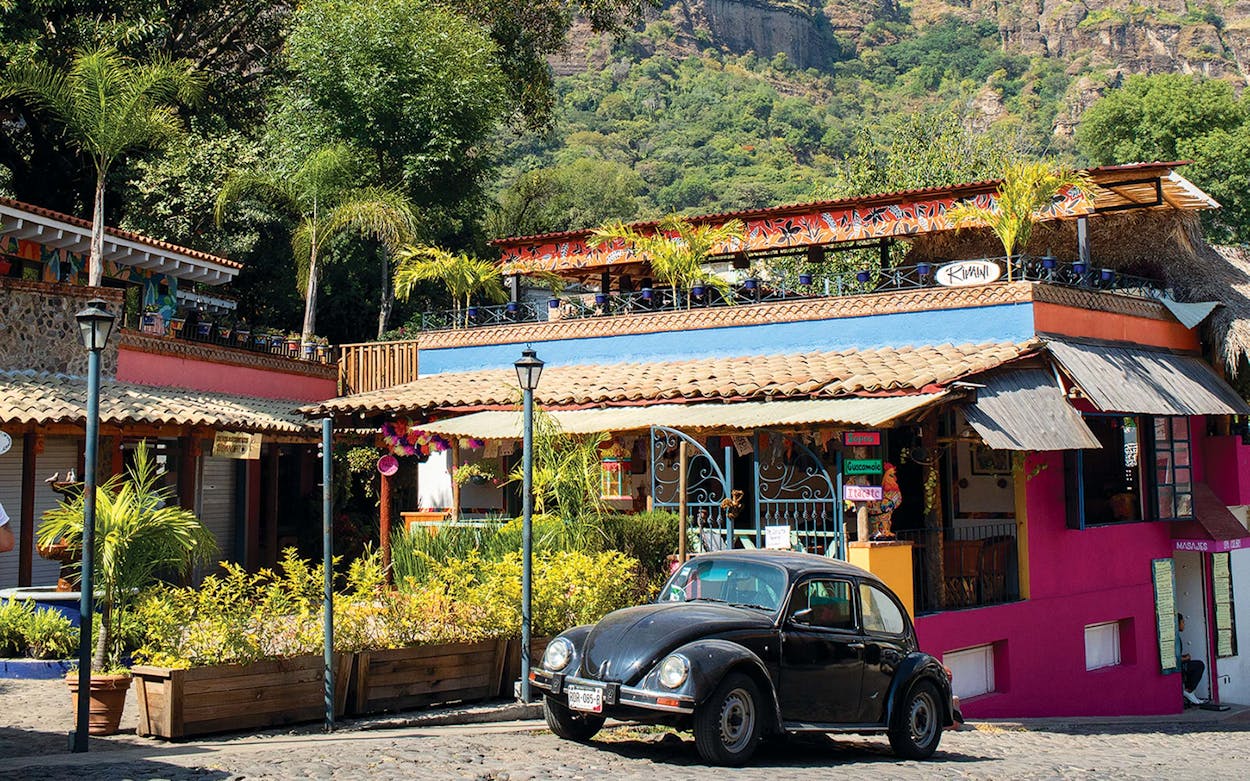Mexico’s best tourist destinations include more than just its bustling capital and serene beaches. Across the country, 132 towns have earned the designation “Pueblo Mágico,” part of a national program started more than twenty years ago to highlight rural areas known for special qualities, from natural attractions to distinctive cuisines and historic sites. These five magical towns are within a few hours’ drive of Mexico City and are relatively safe to visit, especially if you travel with a trusted driver (such as one hired through a travel agency), take the highways in the daytime only, and stay in groups.
Bernal, Querétaro
This colonial town is known for its rock monolith, one of the tallest in the world, which towers 1,420 feet above the village. The site is packed daily with visitors braving the nearly hour-long walk up to a lookout, where they’re rewarded with sweeping views. Getting from the central plaza to the base of the monolith is a trek all its own, but it’s an enjoyable one along a paved street dotted with locals selling micheladas and regional snacks, including esquites, corn kernels in a variety of colors that are served with everything from shrimp to green mole. After you complete the hike, you’ll need some real nourishment. Bernal is known for its gorditas, corn pockets filled with stews or other ingredients such as steak, cactus, and potatoes. If you’d prefer a view without a hike, get a patio table at De Cote Casa Vitivinícola, where you can enjoy dishes paired with Mexican wines.
Drive from Mexico City: About three hours north.

Taxco de Alarcón, Guerrero
Taxco is the city of silver. The pueblo’s connection with the metal goes back centuries. Indigenous communities first lived in the region and extracted silver and other materials for decorative and ritual purposes. But when the Spanish took notice, in the mid-1500s, they constructed a town and launched large-scale mining operations. This history is evident on every corner. The quaint cobblestone paths are lined with shops and street vendors selling silver jewelry. Leave some time to pueblear (the Mexican term for walking around small towns like this one), and enjoy the Instagram-worthy streets. Most of the buildings in the center are white with red trim and tiles. (Find a rooftop from which you can take a photo.) If you have time, Pozas Azules de Atzala’s natural waterfalls and pools are well worth the forty-minute drive.
Drive from Mexico City: About three hours south.
Mineral del Chico, Hidalgo
Founded more than four hundred years ago as a mining town, Mineral del Chico is now a destination for adventure tourists. Go boating, rappelling, or horseback riding, or take a hike through the emerald-green forest of pine, oak, and fir trees. The mountain hamlet’s cozy cabins and cottages offer a welcome respite after all that activity, especially during the winter, when a thick fog often blankets the region. Restaurants around the central plaza serve hot chocolate and churros, locally brewed beer, and the Hidalgo style of barbacoa, typically wrapped in maguey leaves and cooked underground.
Drive from Mexico City: About two hours north.

Valle de Bravo, Estado de México
The drive to Valle de Bravo is almost as much of a treat as the town itself. The scenic route from Mexico City is picturesque, with rolling green hills eventually giving way to the pueblo, which surrounds a small lake. Many of the available rental homes are extravagant. (According to a tour guide, some of the grandest are used as sets for telenovelas.) But travelers looking for more affordable stays can find boutique hotels and smaller cabins. The dining scene has exploded in recent years, so you can get anything from Swiss fondue to upscale Spanish tapas. Take a boat ride around the lake, visit the Velo de Novia nature reserve to see an impressive waterfall, or hike up Mirador La Peña, a lookout point, and soak up a panoramic view of the area. Time your visit to be there between November and March, when millions of monarch butterflies call the Piedra Herrada Sanctuary home.
Drive from Mexico City: About three hours west.
Tepoztlán, Morelos
Ideal for a day trip, Tepoztlán on weekends brims with chilangos, the nickname for Mexico City residents. Buses leave from the capital’s south terminal every hour or so, or you can find a ride via car service for about $75. Once you’ve arrived, walk up to an archaeological site called Tepozteco, which boasts a temple dedicated to Tepoztēcatl, the Aztec god of pulque, the ancient alcoholic drink made from fermented maguey sap. (The temple has been closed to visitors on and off for the past few years, but the climb offers enjoyable views of the town below.) Afterward, head straight to the mercado for antojitos, Mexican snacks such as quesadillas and tacos. After lunch, visit one of the stalls off the main square for a michelada or ice cream. Those who prefer to stay overnight will find luxurious hotels such as the Amomoxtli and hip restaurants, including the reservations-only Margarita Concept Garden.
Drive from Mexico City: About an hour and a half south.
This article originally appeared in the January 2023 issue of Texas Monthly with the headline “Explore These Five Pueblos Mágicos Within a Few Hours of Mexico City.” Subscribe today.
- More About:
- Mexico









